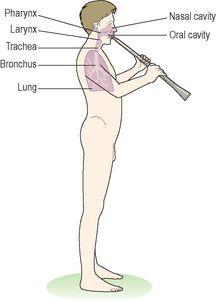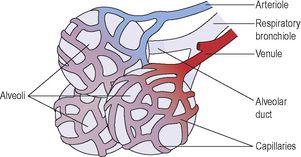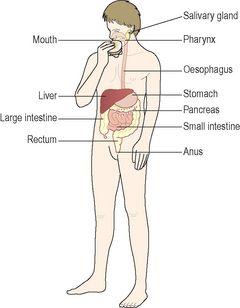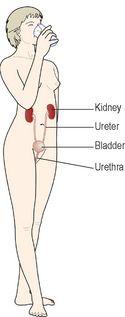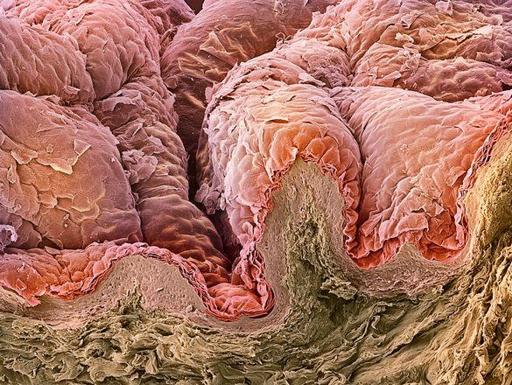Ross & Wilson Anatomy and Physiology in Health and Illness (7 page)
Read Ross & Wilson Anatomy and Physiology in Health and Illness Online
Authors: Anne Waugh,Allison Grant
Tags: #Medical, #Nursing, #General, #Anatomy

Figure 1.10
Combined use of the special senses:
vision, hearing, smell and taste.
Verbal communication
Sound is a means of communication that is produced in the larynx as a result of blowing air through the space between the
vocal cords
(see
Fig. 10.8
) during expiration. Speech produces recognisable sounds by co-ordinated contraction of the muscles of the throat and cheeks, and movements of the tongue and lower jaw.
Non-verbal communication
Posture and movements are often associated with non-verbal communication, e.g. nodding the head and shrugging the shoulders. The skeleton provides the bony framework of the body (
Ch. 16
), and movement takes place at joints between bones. Skeletal muscles move the skeleton and attach bones to one another, spanning one or more joints in between. They are stimulated by the part of the nervous system under voluntary (conscious) control. Some non-verbal communication, e.g. changes in facial expression, may not involve the movement of bones.
Intake of raw materials and elimination of waste
This section considers substances taken into and excreted from the body. Oxygen, water and food are taken in, and carbon dioxide, urine and faeces are excreted.
Intake of oxygen
Oxygen gas makes up about 21% of atmospheric air. A continuous supply is essential for human life because it is needed for most chemical activities that take place in the body cells. Oxygen is necessary for the series of chemical reactions that result in the release of energy from nutrients.
The upper respiratory system carries air between the nose and the lungs during breathing (
Ch. 10
). Air passes through a system of passages consisting of the pharynx (also part of the digestive tract), the larynx (voice box), the trachea, two bronchi (one bronchus to each lung) and a large number of bronchial passages (
Fig. 1.11
). These end in alveoli, millions of tiny air sacs in each lung. They are surrounded by a network of tiny capillaries and are the sites where vital gas exchange between the lungs and the blood takes place (
Fig. 1.12
).
Figure 1.11
The respiratory system.
Figure 1.12
Alveoli:
the site of gas exchange.
Nitrogen, which makes up about 80% of atmospheric air, is breathed in and out, but it cannot be used by the body in gaseous form. The nitrogen needed by the body is obtained by eating protein-containing foods, mainly meat and fish.
Ingestion of nutrients (eating)
Nutrition is considered in
Chapter 11
. A balanced diet is important for health and provides
nutrients
, substances that are absorbed, usually following digestion, and promote body function. Nutrients include water, carbohydrates, proteins, fats, vitamins and mineral salts. They serve vital functions including:
•
maintenance of water balance within the body
•
energy production, mainly carbohydrates and fats
•
synthesis of large and complex molecules, using mineral salts, proteins, fats, carbohydrates and vitamins
•
cell building, growth and repair, especially proteins.
Digestion
The digestive system evolved because food is chemically complex and seldom in a form body cells can use. Its function is to break down, or
digest
, food so that it can be absorbed into the circulation and then used by body cells. The digestive system consists of the alimentary canal and accessory glands (
Fig. 1.13
).
Figure 1.13
The digestive system.
Alimentary canal
This is essentially a tube that begins at the mouth and continues through the pharynx, oesophagus, stomach, small and large intestines, rectum and anus.
Glands
The accessory organs situated outside the alimentary canal with ducts leading into it are the
salivary glands
, the
pancreas
and the
liver
. There are also many tiny glands situated in the walls of the alimentary canal. Most of these glands synthesise
digestive enzymes
that are involved in the chemical breakdown of food. Some others secrete mucus that provides lubrication.
Metabolism
This is the sum total of the chemical activity in the body. It consists of two groups of processes:
•
anabolism
, building or synthesising large and complex substances
•
catabolism
, breaking down substances to provide energy and raw materials for anabolism, and substances for excretion as waste.
The sources of energy are mainly the carbohydrates and fats provided by the diet. If these are in short supply, proteins are used.
Elimination of wastes
Carbon dioxide
This is a waste product of cellular metabolism. Because it dissolves in body fluids to make an acid solution, it must be excreted in appropriate amounts to maintain pH (acidity or alkalinity) within the normal range. The main route of carbon dioxide excretion is through the lungs during expiration.
Urine
This is formed by the kidneys, which are part of the urinary system (
Ch. 13
). The organs of the urinary system are shown in
Figure 1.14
. Urine consists of water and waste products mainly of protein breakdown, e.g. urea. Under the influence of hormones from the endocrine system, the kidneys regulate water balance. They also play a role in maintaining blood pH within the normal range. The bladder stores urine until it is excreted during
micturition
.
Figure 1.14
The urinary system.
Faeces
The waste materials from the digestive system are excreted as faeces during
defaecation
. They contain:
•
indigestible food residue that remains in the alimentary canal because it cannot be absorbed
•
bile from the liver, which contains the waste products from the breakdown of red blood cells
•
large numbers of microbes.
Protection and survival
In this section relevant activities are outlined under the following headings: protection against the external environment, protection against infection, movement and survival of the species.
Protection against the external environment
The skin (
Fig. 1.15
) forms a barrier against invasion by microbes, chemicals and dehydration (
Ch. 14
). It consists of two layers: the epidermis and the dermis.
